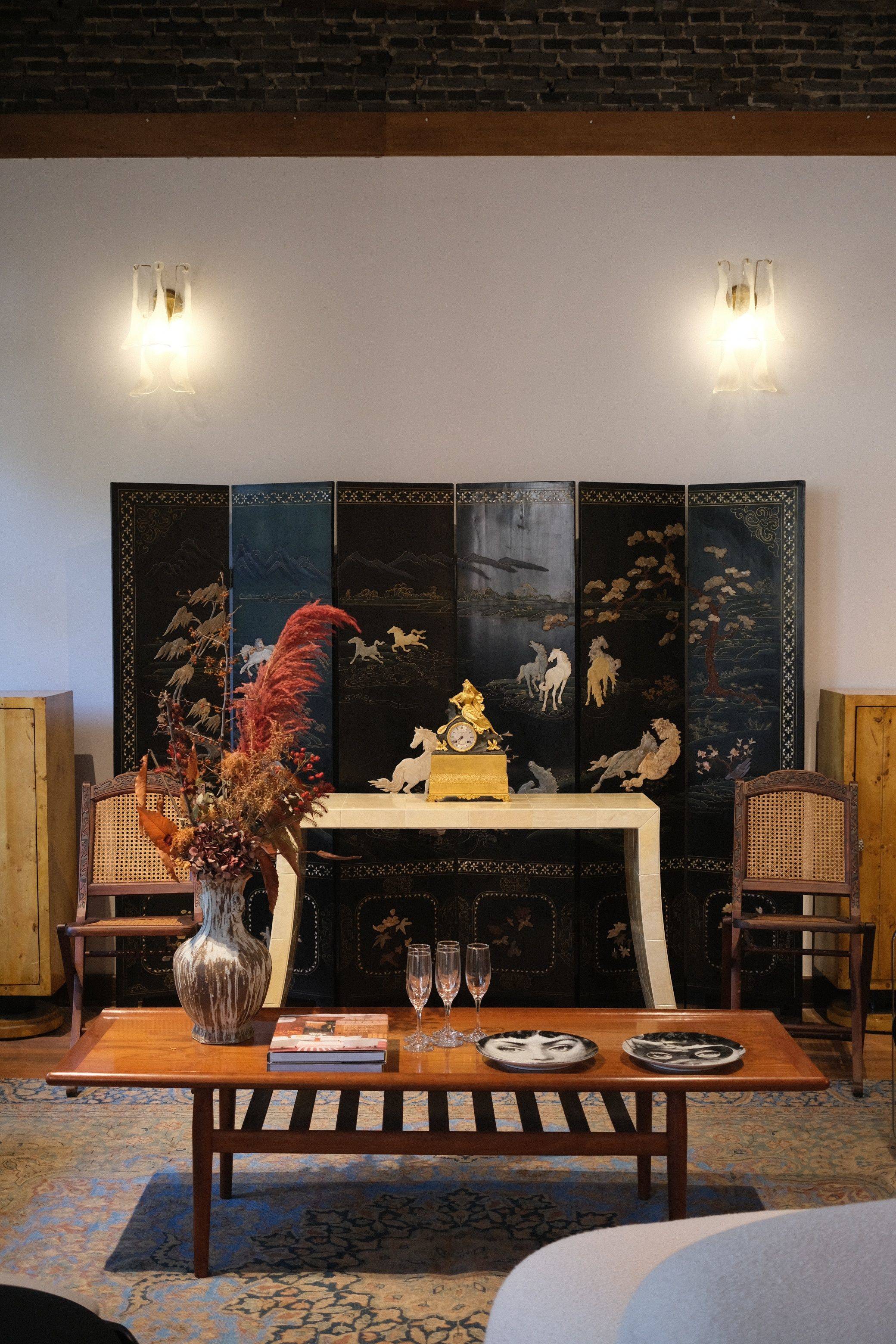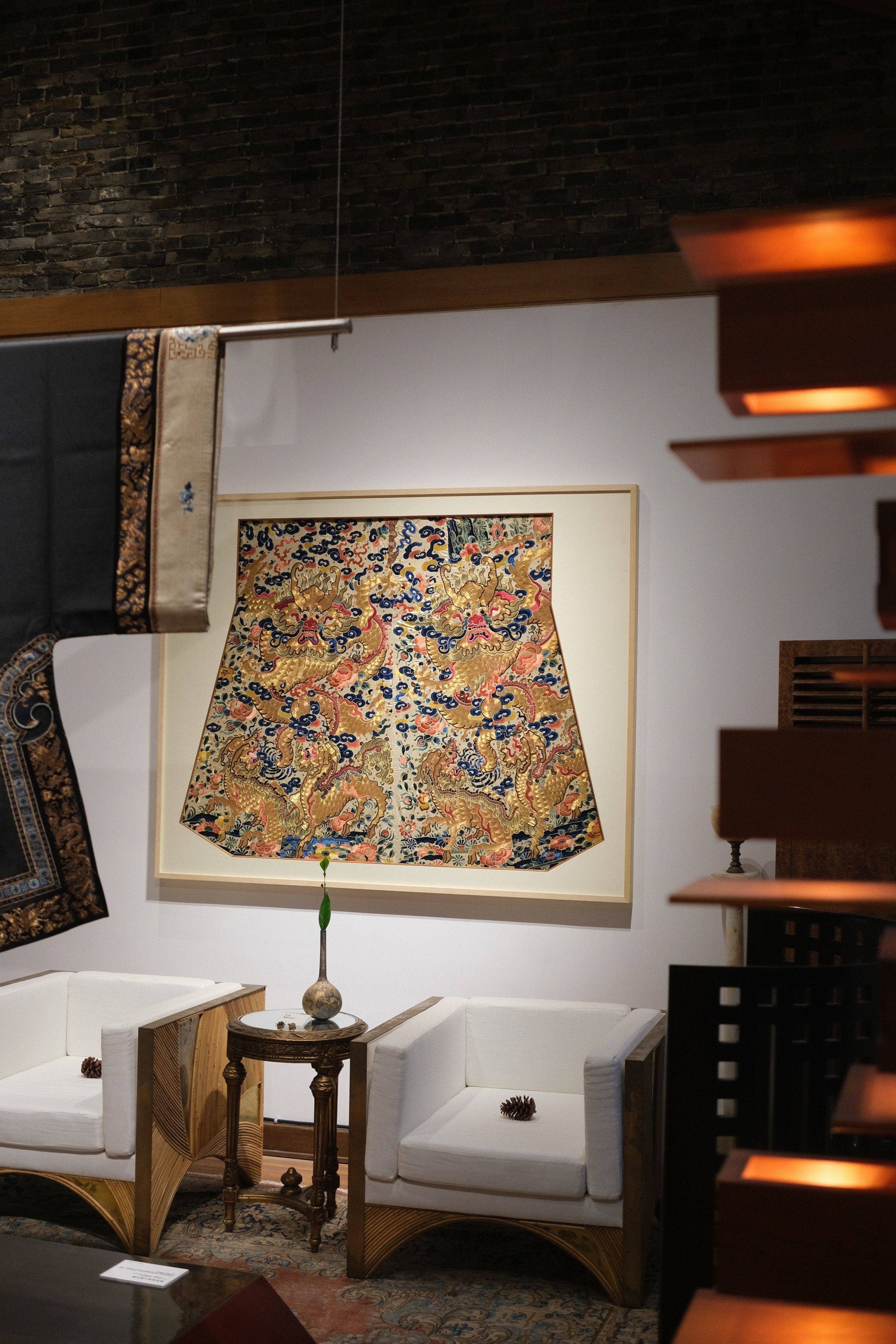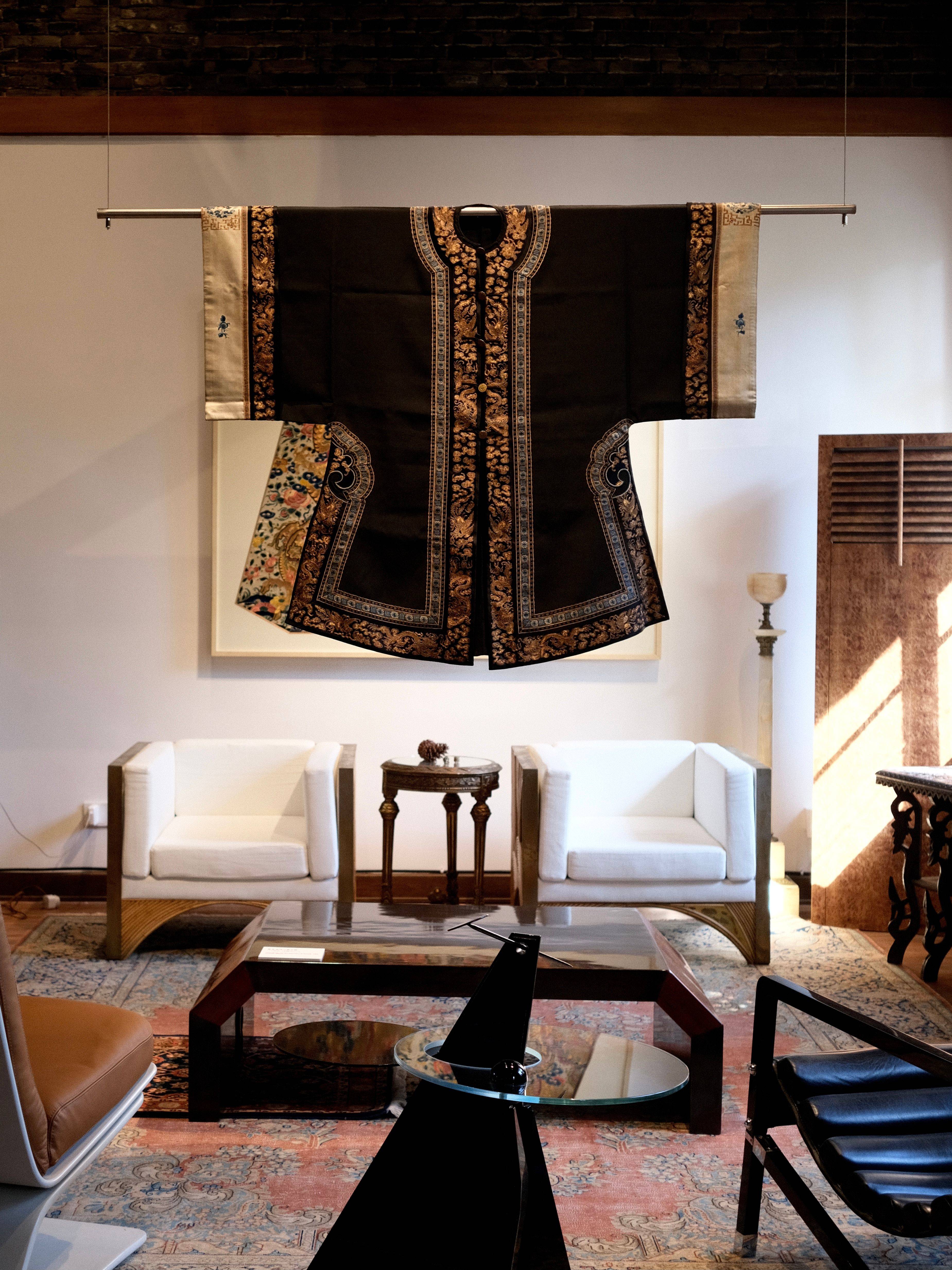We are proud to present an extraordinary exhibition of meticulously preserved Qing Dynasty artifacts from a private collection. Coinciding with renewed global interest in this "Hidden Century," this unique display brings home treasures from overseas. Here, they dialogue with our diverse furniture collection, exploring the timeless pursuit of beauty and bridging Eastern and Western aesthetics across centuries.
Recently, the British Museum's exhibition "China's hidden century" has rekindled public interest in that complex historical period. Wars and treaties coexisted.These artifacts, the culmination of various crafts from the late Qing, adorned with the richness of color and craftsmanship, have been called the "Hidden Century" in foreign lands, evoking sighs of regret. Across the ocean, the true face of late 19th-century China has been obscured, but for Chinese people, this is an unprecedented turning point that we have never forgotten in a thousand years.
Everything in the world is so. When the conditions of time and space and others predestined to come together, a thing happens. A collector who has visited the AMBELIE Shanghai before has decided to exhibit her private collection of Qing dynasty artifacts. Many of the items on display in the British Museum's 'A Hidden Century' exhibition are from private collections - similarly, the antiquities on display at AMBELIE, which epitomize Qing Dynasty artefacts, were brought back by the collector from overseas. When the first object was received from an elderly collector, he said, "This originally belonged to you in China, and now it can go home." Over the years, these artefacts would not have been easily displayed, but now they are out in the world because she sees an ideal home environment here, and is willing to share her years of collecting with more people having a common goal. ”I am only the custodian of these objects, and I hope that other kindred spirits will continue to look after them with care and attention."
How to understand the compatibility between the furniture in AMBELIE's collection and the treasures from the Qing Dynasty? The beauty revered by the Chinese people, if traced back to the line in "Poetry Appreciation" that says, "Xie linyun’s poems are like a lotus emerging from the water, Yan tinzhi’s poems are like intricately carved gold," can generally be divided into two paths. One is simple, clean, and fresh, like dew falling on the tip of a lotus leaf, the swaying of plants, which can be called "mountain and forest atmosphere"; the other is gorgeous, solemn, and rich, like towering platforms and high buildings, also known as "imperial court atmosphere." The mainstream aesthetic of the aristocracy in the past was mostly the imperial court atmosphere; in recent times, with the changes in social trends, top-notch design has rushed towards natural, minimalist structures, especially favored by young collectors. Objects with elaborate carvings and meticulous craftsmanship have become a more niche category of antiques. Today, as the "Chinese style" trend returns, what comes back into view is not only the peak craftsmanship of the late Ming and Qing periods but also an impulse and desire to trace ancestral roots and rediscover one's own cultural traditions. European nobles were once enthusiastic about Chinese Chinoiserie luxury goods exported from China, and their homes were filled with imaginations of the Far East. The mutual admiration between East and West in aesthetics is a timely two-way pursuit.
Regardless of where the tide of aesthetic trends is heading, AMBELIE GALLERY's selection criteria are simply "from the heart." Regardless of ancient or modern times, as long as the craftsmanship is excellent, the matching is appropriate, and it brings joy to the viewer, it is a treasure. If it can align with the pulse of the times, it is an additional joy. In the past year, AMBELIE GALLERY’sCollection predominantly featuring furniture designs from the Bauhaus, Pop Art, Postmodern, and Space Age periods, gradually incorporating lacquerware, jade screens, Ming and Qing embroidery, and more Western classical furniture. gradually approaching the ideal of "elegance" in our hearts that is both ancient and young. Now, even more treasures from the late Qing Dynasty, such as dragon robes, ancestral paintings, and kesi silk, have been added.
In terms of craftsmanship, Qing Dynasty dragon robes were mostly woven and embroidered by Suzhou and Hangzhou, or by the Imperial Household Department's weaving and embroidery institution, embodying the highest achievements in clothing craftsmanship at that time. Kesi silk is known as the "sacred among textiles". When viewed against the light, it resembles carved patterns, and when examined closely, the front and back are seamless, smooth without any trace, intricately intertwining without a sense of heaviness, truly worthy of the saying "inch of fabric, inch of gold." In terms of spirit, the ancestral paintings depict ancestors sitting upright, solemnly gazing, as if a kind of "presence of ancestors," calling on future generations to respect ancestors, follow ancestral ways, be cautious in life, and not forget the fundamentals.
In addition to permanent furniture exhibits, there are also Italian antique tables inlaid with colored stones and brands such as Artempo, Communs, Fortuny, Yamagiwa, etc., entering AMBELIE GALLERY. They come from illustrious Italian craft families or convey the voices and ideas of contemporary Chinese designers. Pietra Dura, a colored stone inlay craft born in ancient Rome and celebrated in the Medici family, shares a similarity across materials and spacetime with kesi silk and lacquerware. Agate, snowflake stone, jade, crystal, jadeite, turquoise, and peacock stone are gathered on a board, inlaid as a painting, intricate and beautiful, never fading.
Fortuny, a traditional Venetian handwoven fabric brand, blends the beauty of ancient Greek and Roman art with Eastern art, weaving into dreamlike fabrics with loose and casually enveloping bodies, blurring the boundaries between home and outerwear.
The furniture brand Artempo, meaning "time art," uses lacquer, brass, and ebony in the simplest forms of graphics and colors, interpreting the purity and tranquility of suprematism.
The Chinese independent fashion brand Communs discovers a longer-lasting narrative in antique clothing than in popular trends, allowing the wearer to experience the process of wandering through history and beliefs in different regions on ordinary things covered by time, and finally finding peace and belonging.
Yamagiwa’s lighting, born from Frank Lloyd Wright in the last century, have a scattered posture like plants and architecture, integrating the overall relationship between nature and artifice, materials and design. Using wood-reflected indirect lighting, they emit a soft light as if filtered through leaves—whether intricate or simple, on these objects, we see the traces of time.
A hundred years ago, the silent old objects of the Qing Dynasty merged with the homes and daily lives of Europeans in the distant West. A hundred years later, they gather in old Shanghai mansions, reshaping into the furnishings of the Chinese people, along with objects from around the world, becoming a cycle of time. Unlike the works of designers in modern and contemporary design that are destined to be remembered in history, behind these crafts from a century ago are countless unnamed craftsmen's painstaking efforts and the silent care of collectors through generations, and this, perhaps, is the meaning of inheritance.


